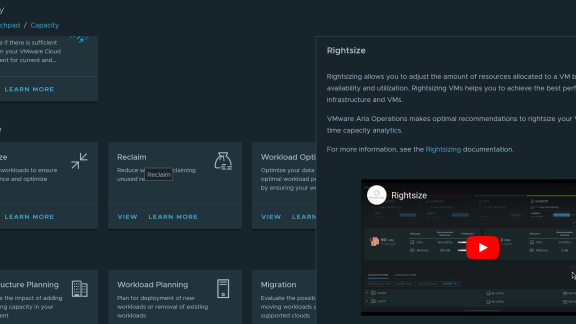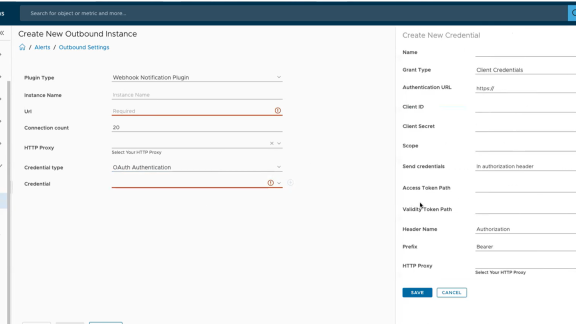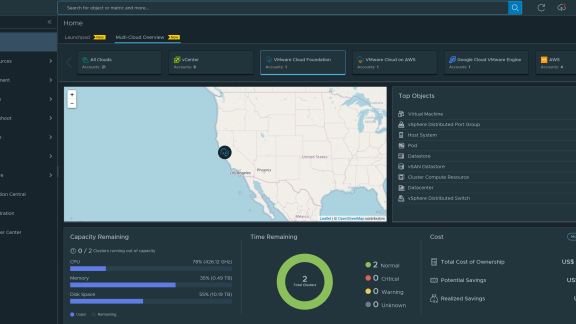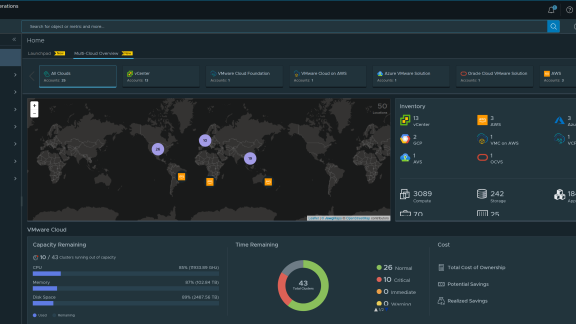vCenter CapacityIQ 1.5 adds support for storage analytics and modelling that spans all three key use cases – analyze, optimize and forecast – of the product. This blog post provides details on these storage related enhancements in CapacityIQ 1.5.
CapacityIQ 1.5 tracks storage space used as well as IO throughput and latency. For storage space used, CapacityIQ provides further breakdown in terms of space provisioned, space used by VMDKs, snapshots etc. For both throughput and latency, CapacityIQ tracks read and write metrics separately. Furthermore, it tracks storage throughout in terms of IOPS as well as KBps. CapacityIQ 1.5 also adds trending and forecasting based on these storage metrics to provide time remaining information.
CapacityIQ dashboard and views have been enhanced to present all this storage anaytics. In the screenshot below, you can see storage metrics as part of the Resources section in CapacityIQ 1.5 dashboard.
CapacityIQ 1.5 also adds a new “Datastores – List” View to provide detailed storage analytics. Here I present this view in three parts. The first part highlights the storage space usage and further breakdown, the second part highlights the storage forecasts based on space usage, and the third part highlights the storage throughput and latency for read and write.
On the capacity modelling side, CapacityIQ includes storage space in “what-if” scenarios for adding virtual machines and datastores. When adding virtual machines, CapacityIQ 1.5 allows you to configure thick or thin provisioning and linked clones. The screenshot below highlights this capability:
You can do similar storage-aware capacity modelling on the supply side. As shown in the screenshot below, CapacityIQ allows you to add, remove or reconfigure datastore storage during what-if scenarios to see the impact on capacity.
And finally, to leverage this storage support in CapacityIQ, watch out for couple things:
- CapacityIQ uses the Storage Management Services in vCenter to collect storage metrics. Make sure this plug-in is working correctly. A quick way to verify this is to check that vSphere client “Storage View” tab shows storage data.
- The availability of some storage metrics depends upon underlying ESX or vCenter Server version limitations. Disk I/O usage and datastore disk I/O capacity metrics are available with only ESX 4.1 hosts. Even if you have a vSphere 4.1 environment, you cannot view NFS and iSCSI datastore metrics for hosts with ESX 4.0 or earlier versions. Datastore space and host disk I/O usage metrics are available with ESX 4.0 or earlier versions. The VM Disk Space Provisioned metric requires vCenter Server 4.0 Update 1 or later.
As always, let me know if you have any questions re. storage support in CapacityIQ 1.5.
– Hemant Gaidhani







